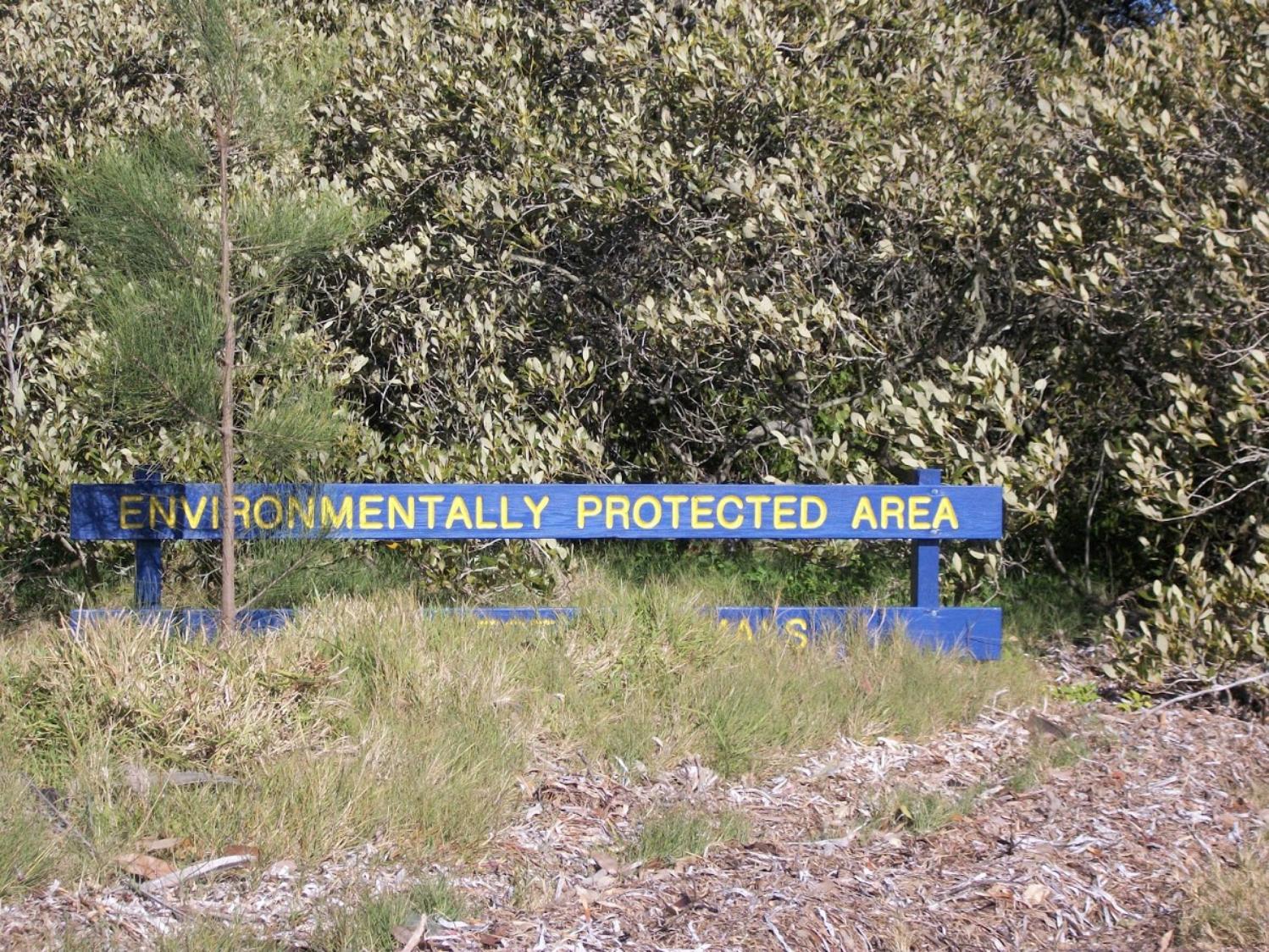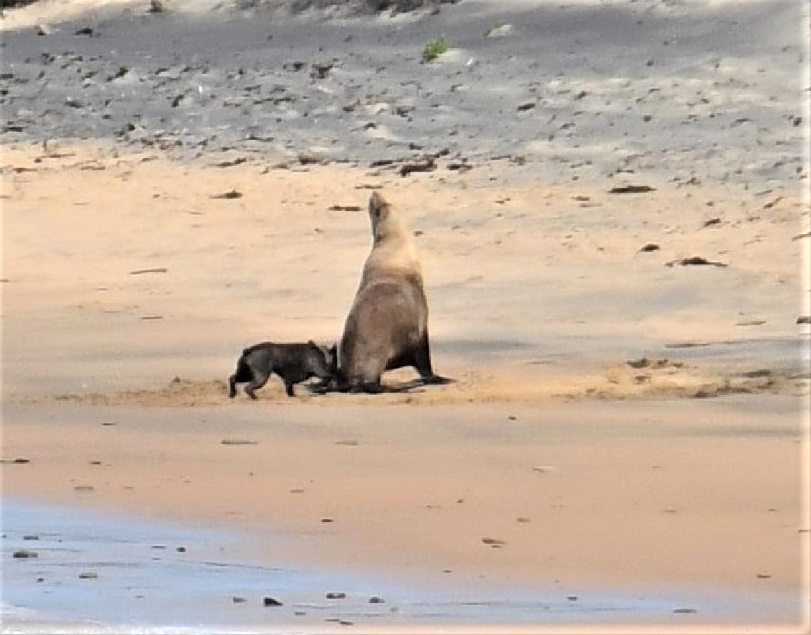July 21-27, 2024: Issue 631
Osprey Nesting Platform Project At Careel Bay Wetlands Avalon Beach Doomed To Fail Due To Council's Inability To Keep Offleash Dogs Out Of EPA - Off Playing Fields
Construction of a pilot artificial nesting platform at Hitchcock Park
Council states it is committed to supporting threatened species in our local area by piloting Sydney's first artificial nesting platform in Avalon Beach. The Eastern Osprey (Pandion cristatus) is a threatened native bird of prey which occurs within coastal environments, estuaries and waterways across eastern Australia. A key threat to the species is urban development, which has contributed to a significant loss of suitable nesting habitat (tall trees close to aquatic environments) across its range.
Ospreys have successfully taken up artificial nesting platforms at numerous other locations in northern NSW, South-east Queensland and South Australia. However, to date an artificial nesting platform designed for osprey has not been attempted within the Greater Sydney Region. Council are proposing to take the lead and be the first Sydney Council to install artificial nesting habitat for osprey and monitor its success.
However, the location they have chosen, is alongside a dog offleash park and where numerous dogs are seen offleash outside that area all day every day, unchallenged by any Council ranger.
Residents state they have witnessed dogs in this area, an EPA or Environmentally Protected Area, all day every day as well, unchallenged. People have witnessed offleash dogs chasing birds off the Careel Bay sandflats and on at least one occasion, a Sea Eagle feeding on the beach area was chased from its food - a fish.
In June 2022 a juvenile pelican was found dying at the EPA site, in the edge of the mangroves, well outside of the dog park, the victim of a suspected dog attack. It passed away before it could be helped.
Reports of attacks on wildlife in areas dogs are not allowed have continued and are growing in this area.
See:
Dog Attacks On Wildlife On North Palm Beach - March 2024Bush-stone curlew at Palm Beach January 2024: Watch out, shorebirds are about - a few notes on our ground-dwelling bird residents and visitor birdsoff leash dog attacking a resting moments ago seal at Long Reef Aquatic Reserve, a no-dogs area, in 2020: image supplied
Likewise, the Careel Bay playing fields area which is also alongside the proposed location, with the fenced dog offleash park at the northern end, is taken over completely by those allowing their dogs to run all over these spaces, unchallenged.
Dog owners have frequently pointed to the condition of the dog offleash area as the reason they decide to use the fields.
Despite signage at the playing fields, and at the western perimeter of the dog park where it becomes the Careel Bay EPA, Council education activities, and NSW Laws regarding dogs offleash in public spaces, dogs offleash occupy all the fields every day, from before dawn to late.
Users of the playing fields have also pointed out the dogs offleash are putting all others using the area at risk, with dog attacks on playing or practicing their sport children being reported, along with attacks on other dogs.
The sports groups state they have to regularly check the fields prior to games to remove dog faeces, which is a significant risk to those who may contract diseases through contact with the same.
The eastern osprey are particularly susceptible to human disturbance and are known to abandon their nests.
The eastern osprey (Pandion haliaetus cristatus) is a diurnal, fish-eating bird of prey. It is usually sedentary and pairs breed at the same nest site, building up a substantial structure on dead trees or limbs. The eastern osprey's diet consists mostly of vertebrate fish species. It possesses specialised physical characteristics and exhibits unique behaviour to assist in hunting and catching prey.
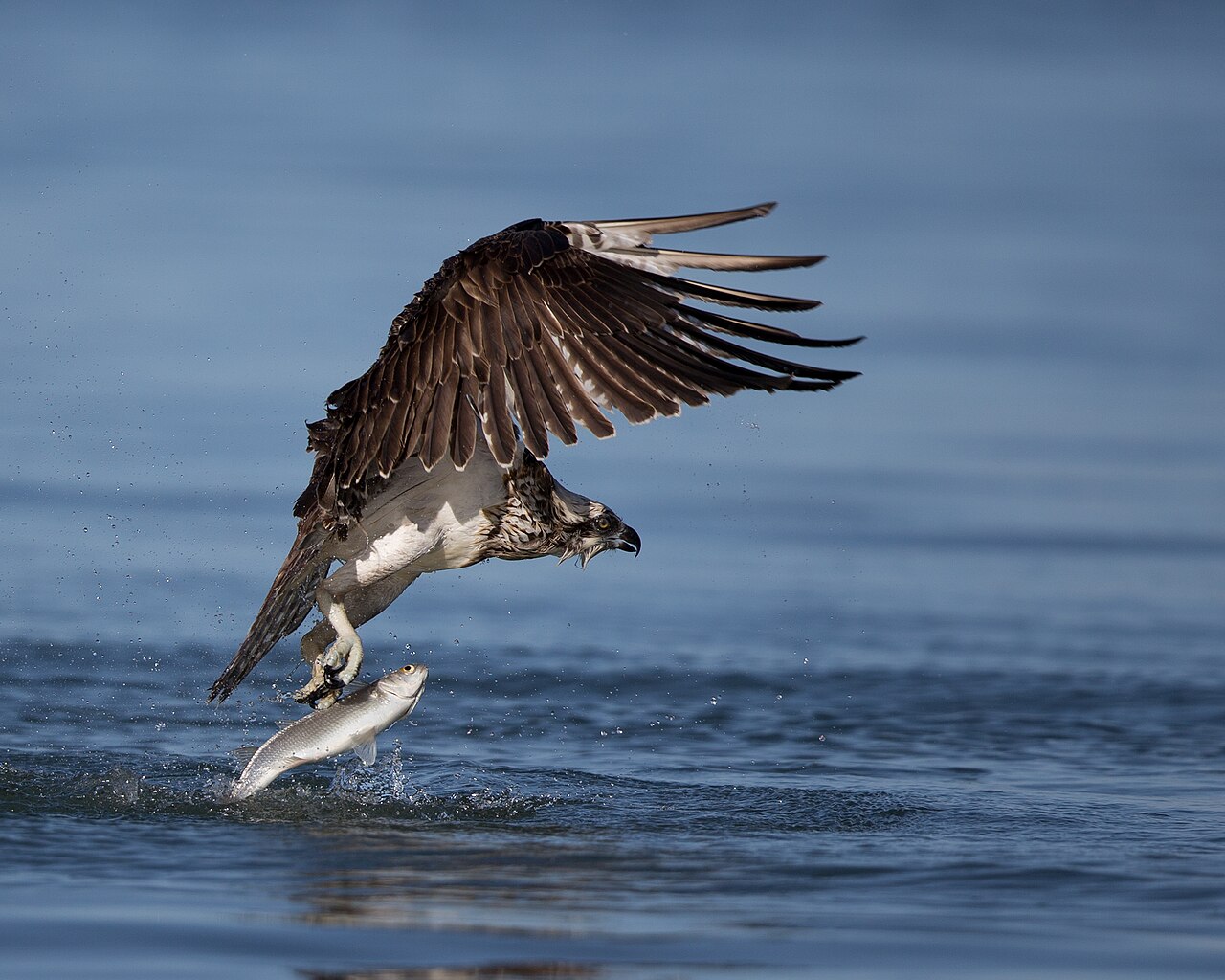
Osprey with catch at Peel Harvey Estuary. Photo: MartinD62
Eastern ospreys usually mate for life. The breeding period varies according to local seasons: this begins between September and October in southern Australia, April to July in northern Australia and June–August in southern Queensland. In Spring the pair begins a five-month period of partnership to raise their young. The clutch size is usually two to three eggs, sometimes up to four, and are able to brood twice in a season. These are laid within a month, and relies on the size of the nest to conserve heat. The egg shell is white or buff with bold splotches and spots of reddish-brown, sometimes so dark as to be black; purple or grey blotches may appear beneath the surface of the shell. The egg measurements are about 62 x 45 millimetres and weigh about 65 grams. The eggs are incubated for about 35–43 days to hatching.
The newly hatched chicks weigh 50 to 60 grams and fledge in 8 to 10 weeks. A study on Kangaroo Island had an average time between hatching and fledging of 69 days. The same study found an average of 0.66 young fledged per year per occupied territory, and 0.92 young fledged per year per active nest. Some 22% of surviving young either remained on the island or returned at maturity to join the breeding population. When food is scarce, the first chicks to hatch are most likely to survive. The typical lifespan is 7–10 years, though rarely individuals can grow to as old as 20–25 years.
In New South Wales, the osprey is listed as vulnerable under the Biodiversity Conservation Act 2016 (NSW). The population had declined until around the 1970s, when they began to thrive in northern area of the state, and started expanding their range southwards. In July 2023, there were 13 breeding pairs on the Central Coast of NSW, the highest number ever observed in the region, and they were second most common raptor there, after the White-breasted Sea Eagle. There is a nest of ospreys nesting in one of the light towers of Central Coast Stadium. The breeding pair produced chicks every year from 2016 until July 2023, when a video of the osprey family was posted on Facebook. The parents were named Rosie and Hutch by patrons of the stadium.
As of July 2024, the bird is not listed or protected by legislation in other states.
However, in South Australia, residents report a nest that had been used for centuries was abandoned due to a person flying a drone over their nest.
In recent decades, all known osprey breeding sites on the mainland of Yorke Peninsula have regularly failed or become abandoned, mainly due to human disturbance. Osprey monitoring on Yorke Peninsula between 2014 and 2016 found that there were no remaining breeding pairs on the mainland, confining their breeding to one offshore island only. Statewide survey data from this time also revealed a significant decline in the breeding population across South Australia.
This project is being supported by NSW Department of Climate Change, Energy, the Environment & Water (DCCEEW).
Council has stated it is hoped that they can commence installation of the 23 metre high pole (installed height) with a specialised artificial nesting basket at the top within Hitchcock Park, once feedback from engagement has been considered and to align with osprey breeding season.
An environmental assessment for the proposed project has been undertaken in accordance with Part 5 of the Environmental Planning & Assessment Act 1979 (EP&A Act) and is available upon request.
Proposed location and images of what the nest will look like:
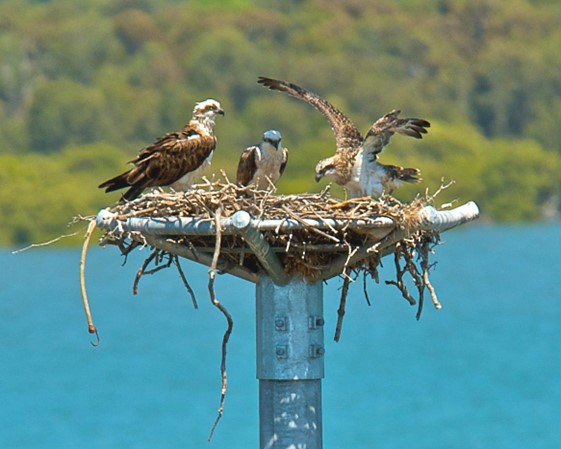
Example nest design
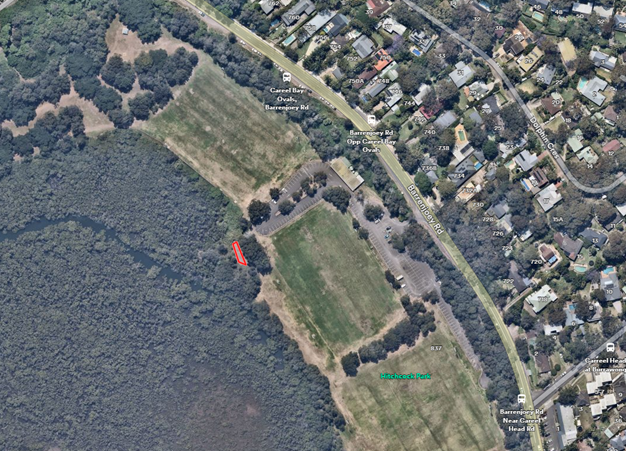
Red quadrant is estimated location
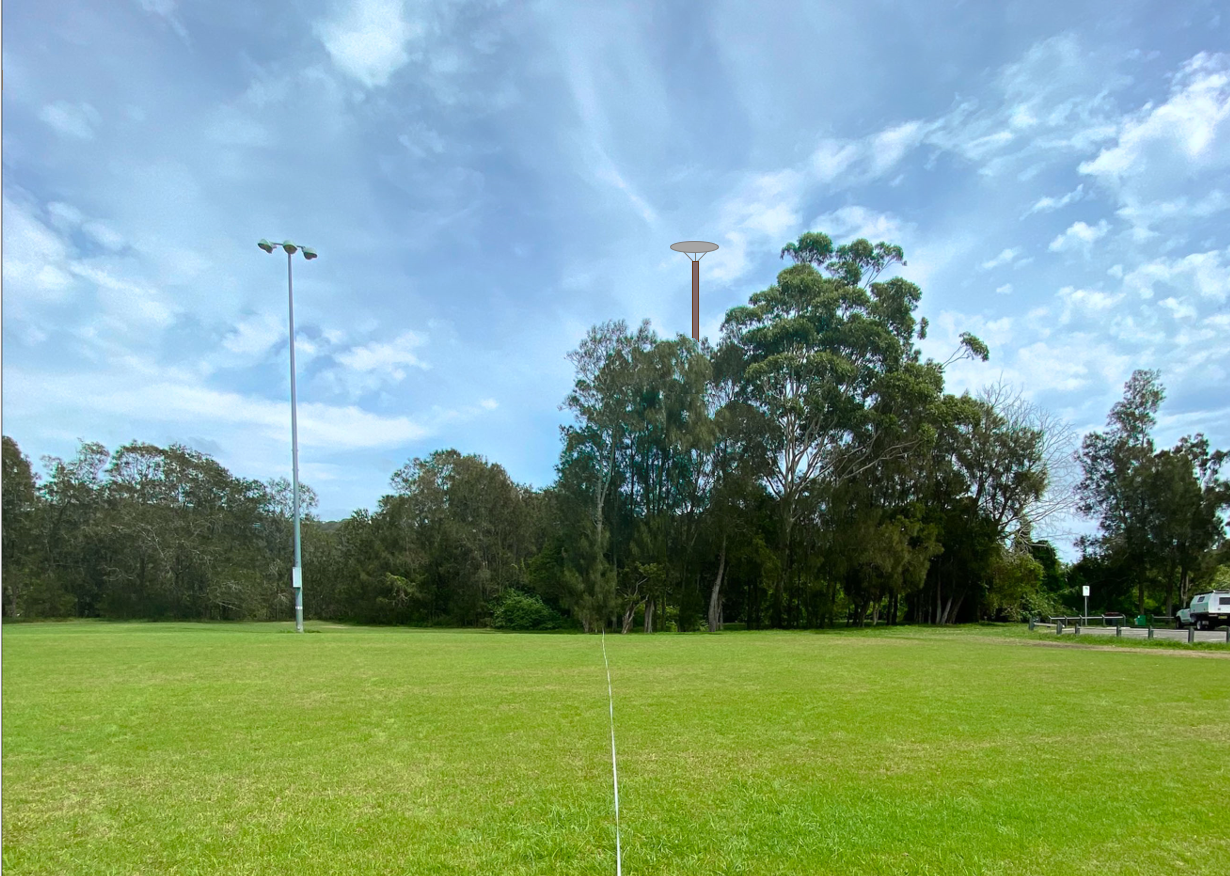
Indicative height and visual aspect
Background: Ospreys have been establishing large stick nests on temporary construction cranes & permanent infrastructure such as lighting poles at sportsfields
Need for additional habitat: Council have received support to strategically identify opportunities for alternative habitat provision for Ospreys on an as needed basis
Next steps: Council asked for feedback on installing a pole with a specialised top platform made out of aluminium, located at Hitchcock Park & received 150+ responses
Council webpage for this Project at: https://yoursay.northernbeaches.nsw.gov.au/osprey-nesting-platform-avalon
